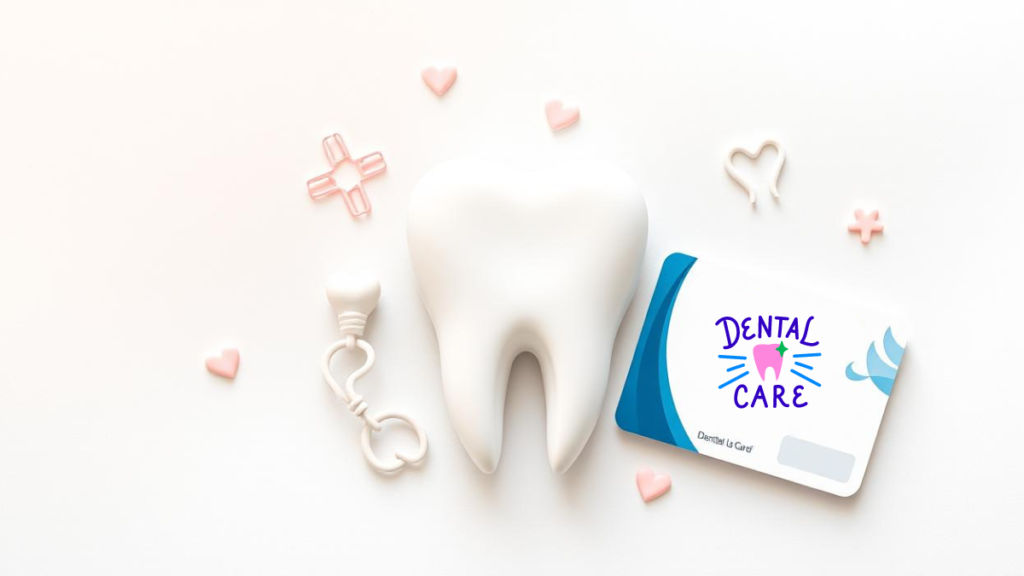Are you wondering, “Does Medicaid Pay for Teeth Implants?” With 87 million Americans covered by Medicaid, this is a big question. Dental implants cost between $3,100 to $5,800 each. But does Medicaid help with these costs?
Finding out what Medicaid covers for dental care can be tricky. While all states are required to cover dental care for children under 21, adult coverage varies significantly. Some states offer no dental benefits, while others provide more comprehensive coverage.
Unfortunately, Medicaid usually doesn’t cover dental implants because they are often considered cosmetic. This makes it challenging to receive assistance. Your state’s rules will determine what dental care you can access. For example, states like Alabama, Maryland, and Tennessee don’t cover dental care at all, while others may cap benefits, such as limiting coverage to $1,000 annually.
Understanding Medicaid and Dental Coverage
Medicaid is key in offering health insurance to low-income Americans. It provides dental benefits, but these vary by state.
What is Medicaid?
Medicaid is a program run by both the federal and state governments. It helps those with low incomes get health coverage. It’s a safety net for many who can’t afford healthcare.
Eligibility Criteria for Medicaid
Who gets Medicaid depends on their income. The program looks at modified annual gross income (MAGI). For 2023, you might qualify if you earn up to $20,130 a year.
Family size also matters. The more people in your family, the higher the income limit to qualify.
General Dental Coverage Under Medicaid
Dental coverage under Medicaid varies by state. All states cover kids’ dental care. But, adult coverage is not the same everywhere.
Here’s a look at adult dental coverage:
| Coverage Type | Description | Number of States |
|---|---|---|
| Comprehensive | Includes preventive, restorative, and some periodontal services | 16 |
| Limited | Covers only specific dental procedures | Varies |
| Emergency-only | Covers dental care only in emergency situations | Varies |
| No coverage | Provides no dental benefits for adults | Varies |
It’s crucial to check your state’s Medicaid policies for dental services. Some states offer extra plans for dental care. These plans aim to improve health and cut costs.
Does Medicaid Pay for Teeth Implants?
Medicaid usually doesn’t cover dental implants for adults over 21. States often see implants as cosmetic, not medically necessary. So, you might need to look for other ways to get implants.
In some cases, Medicaid might cover implants if they’re really needed. You’ll need to show a lot of proof from your dentist or doctor. This includes X-rays and a detailed plan. But, getting approval can take a long time and isn’t sure.
For kids and young adults under 21, Medicaid might help more. The Early and Periodic Screening, Diagnostic and Treatment (EPSDT) program offers full dental care for them.
| State | Adult Dental Coverage | Annual Limit |
|---|---|---|
| South Dakota | Basic services, no implants | $2,000 |
| Alaska | Preventive care, no implants | $1,150 |
| Arizona | Emergency care only | $2,000 |
| Colorado | Basic services, no implants | $1,500 |
| Connecticut | Basic services, no implants | $1,000 |
Even though Medicaid doesn’t usually cover implants, it does for other dental needs. This includes check-ups, cleanings, fillings, and sometimes dentures. If you need implants, you might have to look into other financing or low-cost clinics.
State-by-State Variations in Medicaid Dental Coverage
Medicaid dental coverage varies a lot across the United States. Each state offers different dental care levels, from full coverage to emergency services only. Knowing these differences helps you make better choices.
Comprehensive Dental Coverage
Some states give a lot of dental benefits through Medicaid. Thirty-two states cover basic services like cleanings and fluoride treatments. The same number also offers more complex services, like fillings and crowns.
Thirty-one states provide periodontal care and dentures. This shows a big effort to help people with their dental health.
Limited Dental Benefits
Other states offer less dental coverage. Thirteen states have yearly limits on dental services. Some states have special rules for certain groups.
For example, eleven states have better dental coverage for pregnant women. Sixteen states have special rules for disabled adults.
Emergency-Only Dental Coverage
Nine states only cover emergency dental care. This includes services for pain relief and urgent needs. Three states don’t offer any dental benefits for adults through Medicaid.
| Coverage Type | Number of States | Services Included |
|---|---|---|
| Comprehensive | 32 | Preventive, restorative, periodontal |
| Limited | 13 | Annual limits, specific group policies |
| Emergency-Only | 9 | Urgent care, pain relief |
| No Coverage | 3 | No adult dental benefits |
Recently, more states have started to improve their Medicaid dental coverage. Between 2020 and 2022, several states added new dental benefits. This helped over 3.2 million adults get better dental care.
This change shows how important dental health is. It also helps reduce healthcare costs in the long run.

Alternatives and Options for Dental Implant Coverage
If you’re looking for affordable dental implants or low-cost dental care, there are many options. These alternatives can make dental implants more affordable and accessible.
Medicaid Waivers and Special Programs
Some states have Medicaid waivers or special programs for dental implants. These programs have strict rules and are not always available. Check with your state’s Medicaid office to see if you qualify.
Dental Schools and Low-Cost Clinics
Dental schools are a great choice for affordable dental care. Students work under supervision, saving you money. With 3 million Americans already having implants, dental schools help make them more affordable.
Dental Savings Plans and Financing Options
Dental savings plans are a good alternative to traditional insurance. They offer discounts on dental services, including implants. Financing options like health savings accounts (HSAs) or flexible spending accounts (FSAs) can also help with costs. With implants costing $1,600 to $2,200 per tooth, these options can make a big difference.
| Coverage Option | Potential Savings | Waiting Period |
|---|---|---|
| Delta Dental PPO Premium | 50% after deductible | 6 months |
| MetLife PPO | Varies, $1,500 max benefit | 12 months |
| Spirit Dental PPO | Varies | No waiting period |
By looking into these options, you can find ways to make dental implants more affordable. This is true even without traditional Medicaid coverage.
Conclusion
Knowing about Medicaid dental coverage is key for your teeth’s health. Each state has its own Medicaid dental plan. Some offer a lot, while others give less. This affects your access to dental implants and other important treatments.
Studies show how crucial oral health is. States with better Medicaid dental plans saw more dental visits. They also had fewer untreated dental problems. This shows Medicaid’s big role in keeping us healthy.
If you need dental implants or other treatments, look into all your options. Check your state’s Medicaid plan, dental schools, or financing plans. Remember, kids on Medicaid get dental care in all states. But for adults, coverage varies, with most states offering less.
Your dental health is linked to your overall wellbeing. Make sure you know what Medicaid covers for dental care. Regular check-ups can prevent problems and save money in the long run.
FAQ – Medicaid and Dental Implants
Does Medicaid cover dental implants for adults?
Medicaid usually doesn’t cover dental implants for adults over 21. This is because these implants are often seen as cosmetic. But, if a doctor or dentist says the implant is medically needed, Medicaid might cover it.
What criteria determine if dental implants are medically necessary for Medicaid coverage?
Medicaid might cover dental implants if they’re medically necessary. This means you need a lot of paperwork. You’ll need X-rays and a detailed plan from a dentist or doctor explaining why you need the implant.
Are dental implants covered for children under Medicaid?
Kids under 21 with Medicaid might get dental implants covered. This is through the Early and Periodic Screening, Diagnostic and Treatment (EPSDT) program. It offers full dental care for kids.
How does Medicaid dental coverage vary by state?
Medicaid dental coverage changes a lot from state to state. Some states don’t cover dental care at all. Others only cover emergencies. But, some states offer more, with yearly limits on what’s covered.
What alternatives exist for those unable to secure Medicaid coverage for dental implants?
If Medicaid won’t cover dental implants, there are other options. You could try dental schools for cheap care. Or look into dental plans or insurance. You could also use dental savings plans or financing to help pay for it.








